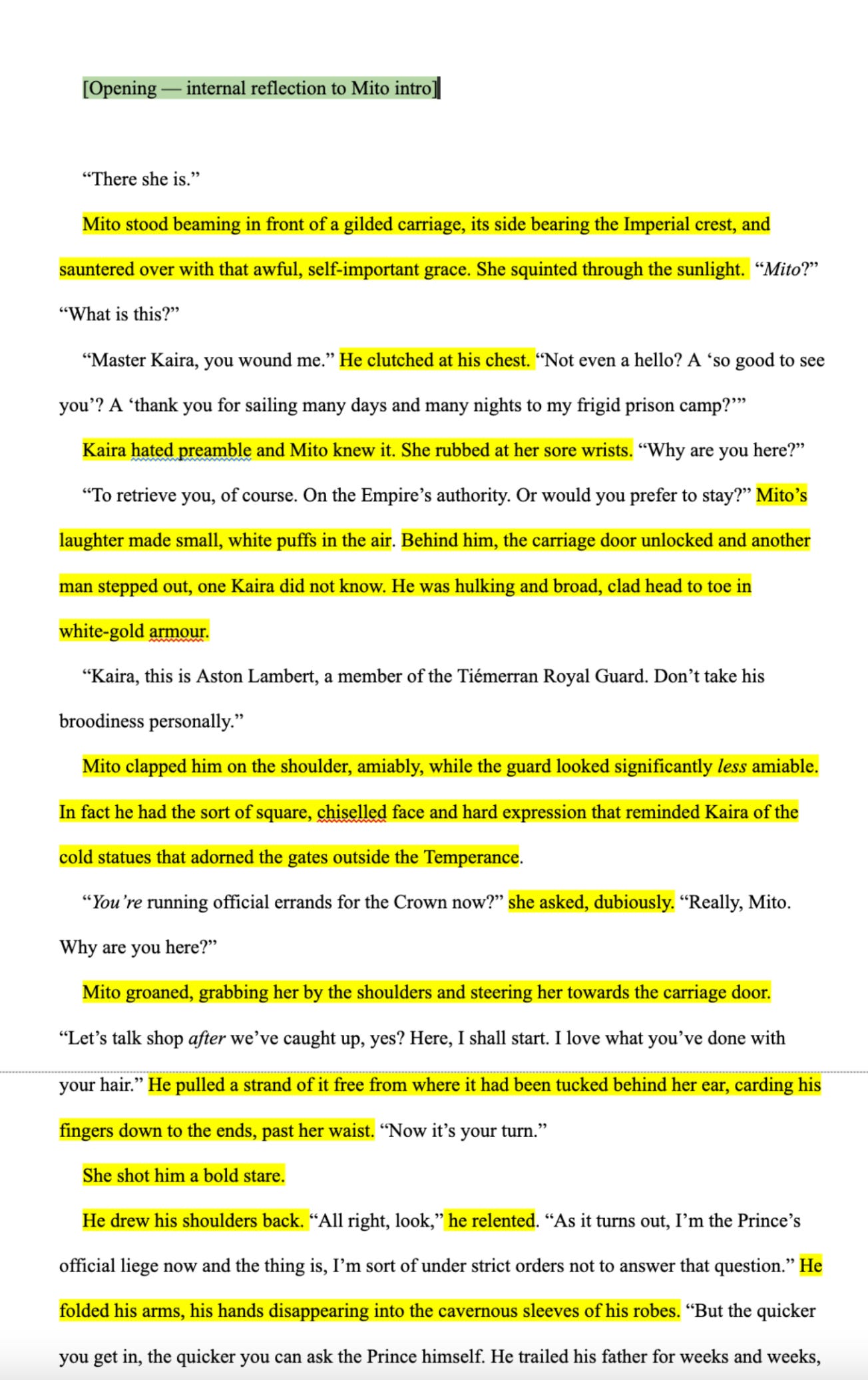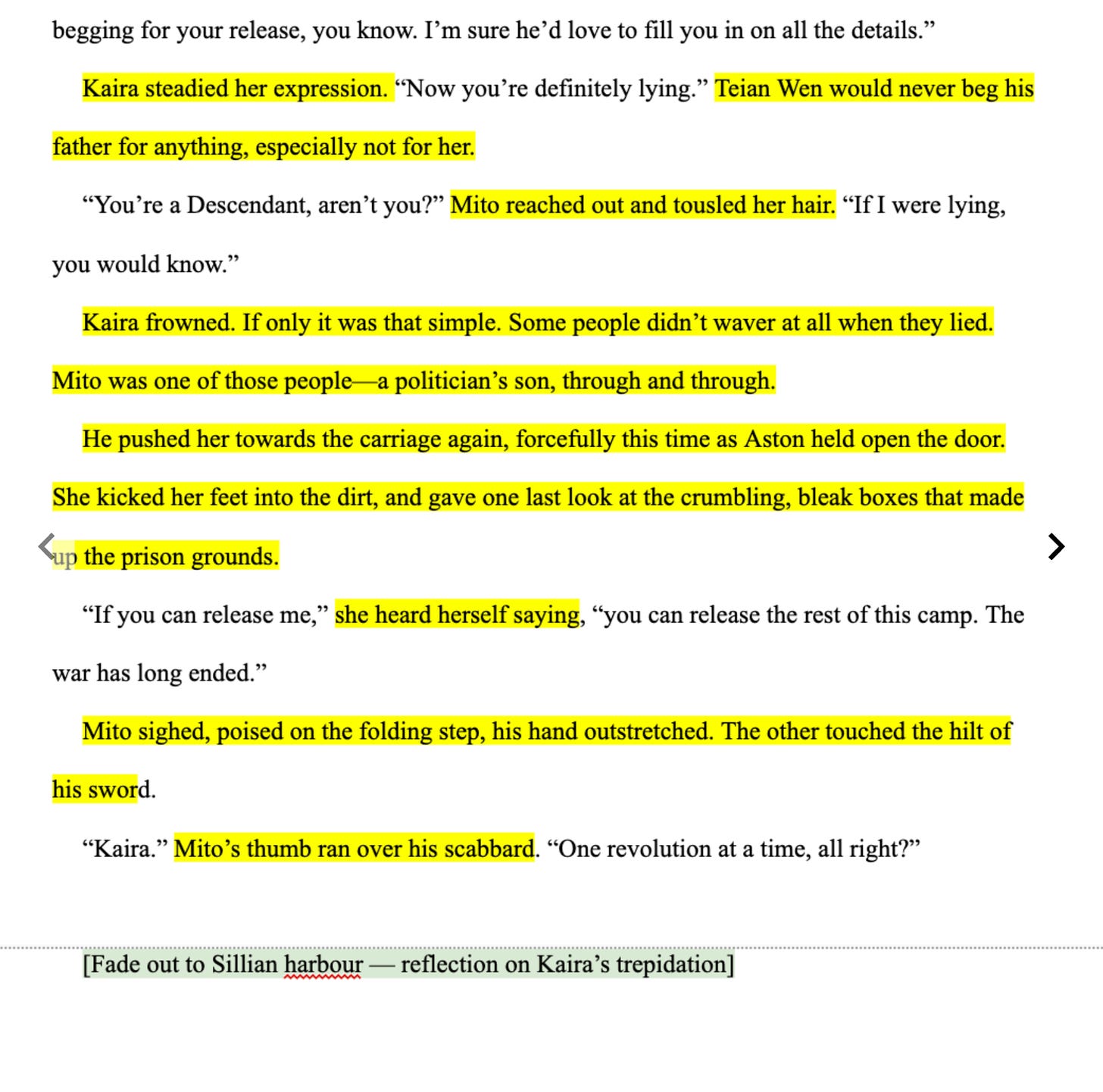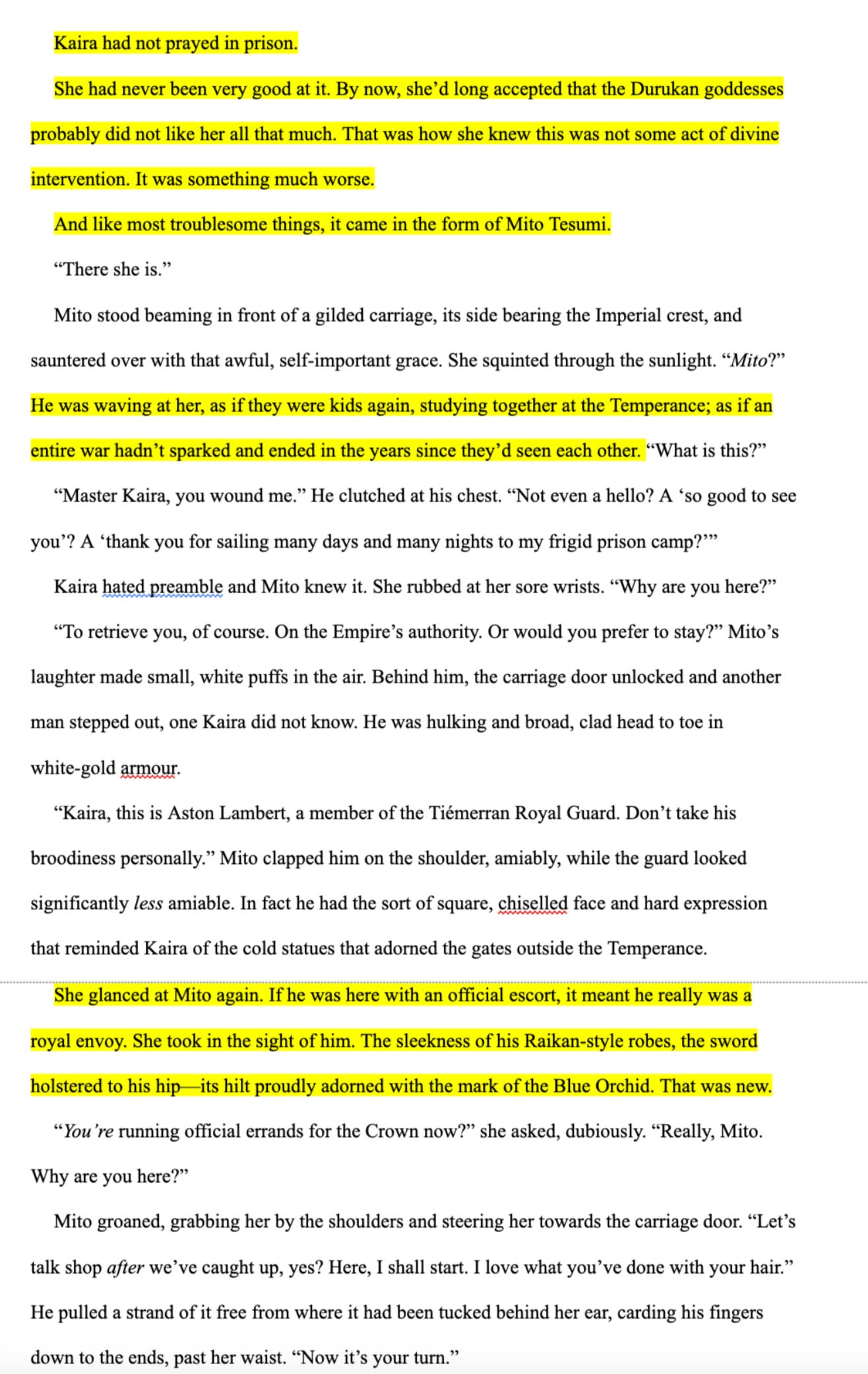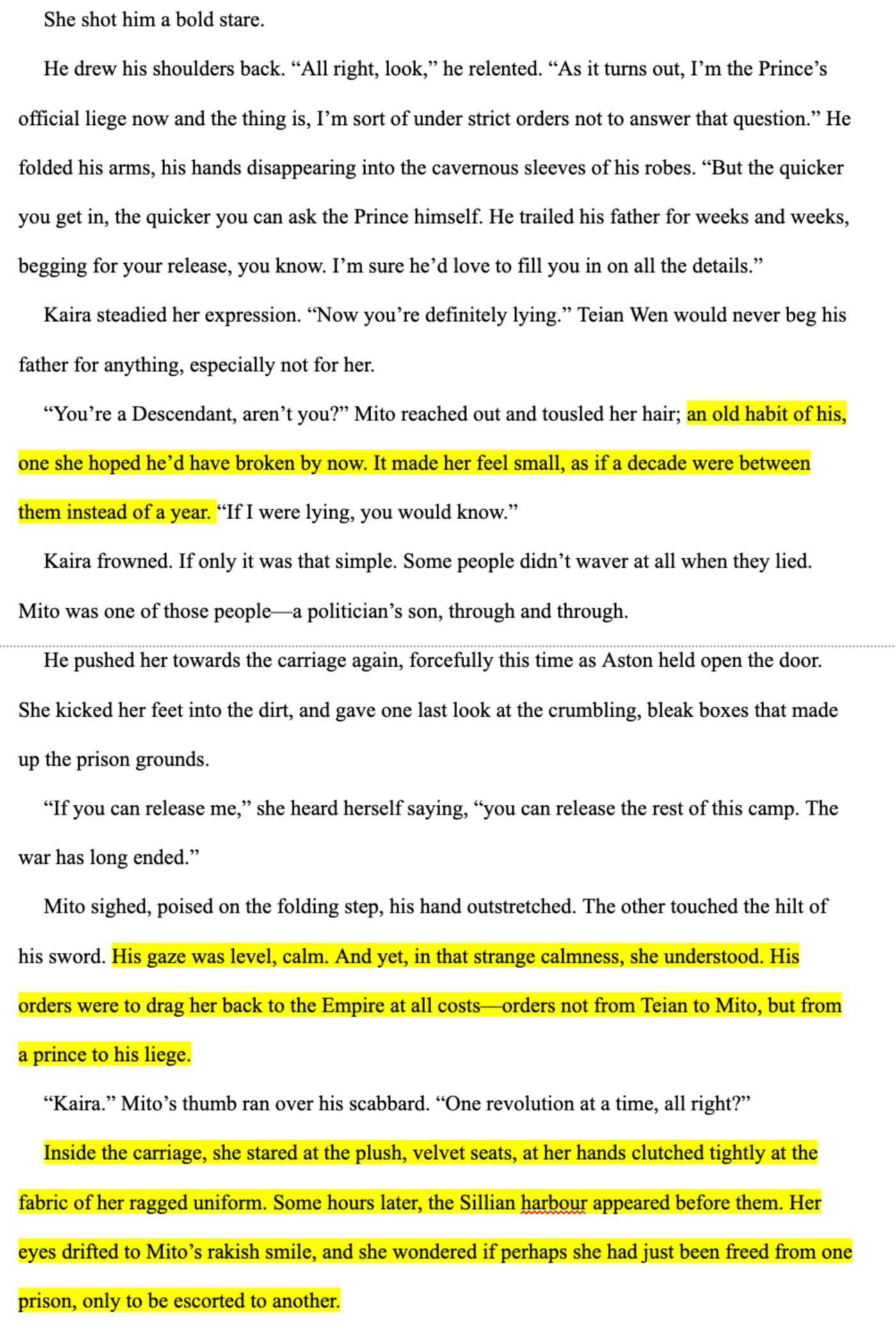[EDITED July 26/2023: some example screenshots were not included when I exported this from Wordpress.]
When I tell fellow writers that I use a "dialogue-first" approach in my writing, the usual response I get is: wait, what?
It's exactly what it sounds like. When I write a new scene, I usually don't write it chronologically but instead, I'll lay out all the dialogue without stopping to describe setting, character actions or even dialogue tags. Yeah, pretty much like a play or a transcript. As writers, we usually know our own stories inside out so I can keep track of who's talking pretty easily without having to make note of it. It's not as confusing as it might sound.
I'm going to lay out how this approach works for me and how it could (maybe) work for other writers too.
I'll be chatting about this more on my channel in the future as well.
But first -- why do I do this?
I'm what some people might classify as a "character-driven" writer. For a lack of a better term. Character motivations and internal conflict are my primary reason for writing. I usually get ideas for stories because I first get an idea for a character. While plotting and world-building and figuring out external stakes is definitely a fun part of the writing process, my personal favourite part of writing (on a day to day level) is dialogue and character interactions.
I write dialogue first because it's motivating. I like to breeze past the daunting "blank page" by simply procrastinating the less exciting stuff (e.g. atmosphere description or scene transitions) and prioritizing the stuff I enjoy. If I'm not excited to write a scene, my prose will come out lacklustre and writing dialogue is what helps me find that excitement -- that spark that will carry the scene forward.
Framework
Instead of writing a scene start to finish in order, I'll write it several times over, just focusing on different elements each time.
This is usually the order in which I tackle it:
Dialogue: gives me a sense of rhythm and makes me focus only on the words that are actually leaving the characters' mouths. I force myself to think about their personality, how it affects their diction, when they are pausing, how the conversation is paced.
Dialogue tags and gestures: the 'he/she/they said's. If characters are moving or doing things while they're speaking, I add that in next. Also I might start writing out key external descriptions like physical appearance or setting.
Atmosphere and internal reflections: This is where the "prose-y" prose starts coming in. By this point I usually have a good feel for the tone of the scene and now I have to start filling in the blanks. (i.e. what is going through the perspective character's head during this conversation? What new things are they learning and how are they reacting to it? How is this information going to change their plans, etc etc.) This is where I also start adjusting dialogue. I might take a line that the character previously said aloud and move it into the internal narration instead if it sounds too heavy-handed. What a character is saying is just as important as what they're not saying. A lot of information can be conveyed just through a character's reaction to something or through an observation. Not everything needs to be outright stated. So basically, at this stage, I'm trying to find that sweet spot between dialogue and subtext.
Scene transitions: what it says on the tin. If characters are moving somewhere mid-scene, for example, I usually fill this out towards the end. This typically also involves the opening/conclusion of scenes -- i.e. the "establishing shot" and the "closing shot."
Now for an example:
This is a scene from a chapter in my old YA fantasy project. (This is taken from a 2-year old first draft so bear with me on the prose.) I've laid it out in sections to illustrate how I more or less use this dialogue-first approach.
For context: the perspective character, Kaira, has just been released from her prison sentence early. She realizes it's at the behest of the Crown (who she distrusts for ~reasons~) and she is being escorted from the prison by an old friend, currently in the employ of the Crown.
STEP 1: Dialogue
Yeah, it looks a bit weird at first. Like I said, I don't even bother with dialogue tags. There are only two people talking in this scene so I can follow who's who pretty easily. The paragraph breaks in between the sections are what I use to indicate to myself later on where I think the significant pauses in the narration should occur. (Sometimes these will shift depending on the flow, as you will see.) In these pauses, I want to let the perspective character (Kaira) stop to comment things in her head.
STEP 2: Tags and gestures
I've highlighted where the additions and changes are. Now I've added in action indicators, dialogue tags and other external descriptions. I also changed what I wanted the "establishing shot" to be and just made note of it at the top of the scene.
STEP 3: Atmosphere and internal reflections
Now that the scene is mostly laid out, I'm finishing it up by adding in the narrator's introspection. Since this is part of an opening chapter, some exposition needs to be done to establish the two characters' relationship (they're childhood friends who haven't seen each other in years) and some key world-building details.
The tonal anchor of the scene is Kaira's apprehension and distrust so making sure that is clear and contextualized is important.
In this scene there are no scene transitions since this is the conclusion of the chapter. If there was a transition (for example, if the characters were moving from point A to B "on screen") this would be step 4. However I try as much as possible to utilize scene breaks when it comes to transitions because most times, you don't need to write out characters going from place to place unless some important plot point or information needs to occur.
Is this method for you?
I doubt this approach is for everyone. Some stories just don't utilize as much dialogue or maybe some writers don't think about their scene rhythm in this way.
It's important to note that I do tend to write my books with full start-to-finish outlines which allows me to jump around my story in a more non-linear way than, say, a pantser might. Still, if you find yourself losing momentum in your writing sessions then I hope a dialogue-first approach (or something similar to it) can be helpful.






It's always such a treat to get insight into your process! Thank you for sharing
This was so insightful and honestly grew my own practice, so thank you so much!